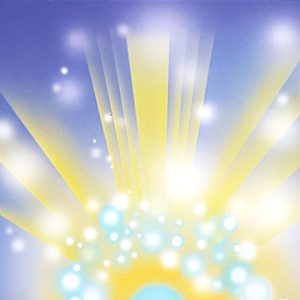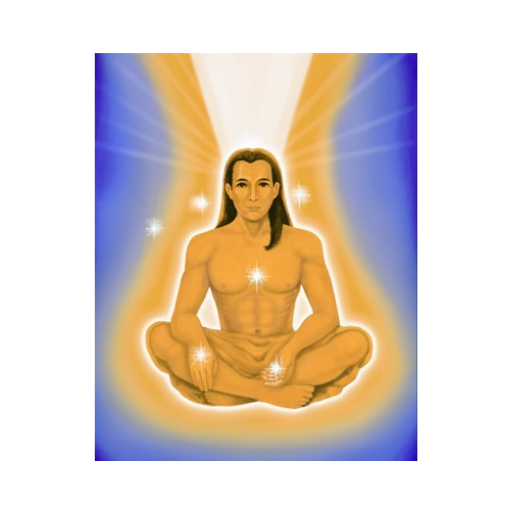What is Arhatic Yoga®? Arhatic Yoga® is a comprehensive system of spiritual practices that rapidly…
Prana Meaning
Prana Meaning: The 5 Types of Prana
What Is Prana?
Yoga is the union of a single consciousness with universal consciousness. But, what does it exactly mean? Isn’t a union only possible when you are a part of something? Yoga is the science that lets you realise that universal energy flows within you. This energy from the universe can come in several forms such as foods, sensations and breath. These are some of the ways of getting energy, the universal energy that manifests in the body is called ‘Prana’. It is through this knowing that yoga can unite you with the whole universe using your body filled with Prana to become a part of universal meaning.
What Is Prana?

Prana is the English spelling of the Sanskrit word praan. It is made up of two syllables: pra that means constant and an that means movement. Therefore, Prana means ‘constant movement’. This continuous flow is seen as ‘vital energy’ or ‘life force’, which starts working when a baby is conceived in their mother’s womb and ends when it (Prana) leaves the body when they die.
Prana is the fundamental unit of life and is responsible for breath flowing through and in the body. It is the hidden power inside all human beings and can be found everywhere around us.
In Hinduism, Prana comes from the atman or the ‘true self’ or ‘soul’. It is through the Prana that the soul sees and feels the experience of the physical world. Whether you are using the eyes to see, your nose to breathe, your skin to feel, or your brain to think, your Prana is always there to guide each of these subtle actions.
The Five Types of Prana
Prana can be divided into five types based on location and functionality. They all must flow properly and any imbalance can result in an imbalance or disturbance of your thoughts, emotions and physical body.
Udana Vayu
Udana translates to ‘fly’ (as in flying) Udana Vayu lets you move the different organs in the body. For example, rotating your head, rounding your shoulders, and kicking with your legs are possible because of Udana Vayu. It is responsible for balancing the Vishuddha chakra (throat) all the way to the head.
- Functions – it helps coordinate the neurons in the body to ensure that the different organs work properly. It is also responsible for controlling the five senses.
- The working area of this prana – it works in different areas of the body, from your neck to the head, from your shoulders to your hands, and from your hips to the tips of your toes.
- Colour – pale white.
- Negative effects – a deficiency can make a person paralyzed. Your senses would also stop working, which may lead to deafness and vision problems.
- Poses to balance Udana Vayu – asana that focuses on the head and shoulders can help balance your Prana. Examples are the fish pose, shoulder stand, bridge pose, and plough pose.
Prana Vayu
Prana is the main energy or Prana in the body. While it usually flows upward, this Prana can also go down and lies at the Ajna chakra (between your eyebrows.)
- Functions – Prana Vayu is responsible for working the circulatory system (pumping of blood) and respiratory system (inhaling and exhaling.) Additionally, it helps you swallow food and balances psychological and physiological activities such as feeling, thinking, and seeing.
- Working area – it works along with the diaphragm and the throat. However, it mainly resides in the heart.
- Colour – red (something that looks like blood) since Prana Vayu lives in the heart.
- Negative effects – a blockage or imbalance can result in heart problems, feeling down, or depression.
- Poses to balance Prana Vayu – asana that focuses on the chest helps in balancing this Prana. Examples are the camel pose, bow pose, bridge pose, and standing cobra pose.
Apana Vayu
This Prana flows in the opposite of Prana Vayu, or downward. The goal of different pranayama exercises is to bring this Prana to the higher energy centres of the body. Apana Vayu is located in the Muladhara chakra.
- Functions – this Prana is responsible for eliminating waste like urine, gas, and feces. Apana Vayu helps create a smooth delivery during childbirth. Moreover, it is also responsible for a woman’s menstrual cycle, a man’s ejaculation and sexual stimulation.
- Working area – Apana Vayu is located from the pelvic floor down to the feet. This Prana has various working areas including the reproductive system, urinary system, large intestine, and the kidneys.
- Colour – indragopa (a combination of white and red.)
- Negative effects – imbalances can result in diabetes, stomach-related problems such as diarrhea and constipation, itching, laziness, tiredness, and other forms of negativity.
- Poses to balance Apana Vayu – asana that focuses on the area near the anus (Muladhara chakra) helps balance this Prana. Examples are the locust pose, bound angle pose, and tree pose.
Samana Vayu
Samana can be translated to ‘equal’ (as in balance.) It works between the prana and Apana Vayu and only works in a specific part of the body—which means this Prana neither goes upward nor downward. It focuses on the body’s ‘fire element’ and stimulates the Manipura chakra.
- Functions – this Prana is responsible for digestion and makes sure the organs like the stomach, large intestine, and liver work properly. It has a cooling mechanism too, to balance out the heat produced by the digestion process.
- Working area –while it takes care of the organs from the diaphragm to the navel, it is mainly seated at the navel.
- Colour – its colour is a combination of prana and Apana Vayu. Think about a very warm, rich red.
- Negative effects – an imbalance of this Prana can affect your appetite and thus, make you weaker. An imbalance can also affect your body’s metabolism.
- Poses to balance this Prana – asana that focuses on the navel can help balance Samana Vayu. Examples are the locust pose, side angle pose, and chair pose.
Vyana Vayu
The most integrated form of Prana, Vyana Vayu flows in various organs of the body using Nadis or subtle energy channels.
- Functions – Vyana Vayu is responsible for nourishing imbalanced or deficient Prana through blood flow.
- Working area – this Prana can is all over the body and mind through the circulatory and nervous systems.
- Colour – this energy can be visualised as your aura, and thus has a colour like rays of light.
- Negative effects – a deficiency can result in a lack of coordination among motor and sensory neurons. This can lead to tight or weak muscles, and you may start sweating excessively.
- Poses to balance Vyana Vanu – asana that uses every part of your body helps balance out this Prana. Examples are the eagle pose and half-moon pose.
Prana Conclusion
Prana is an important form of energy that allows the body to perform its daily activities. The only time it stops working is when it leaves our body at the time of death. Prana is divided into five forms and maintaining the balance in all these forms is essential to make sure the body functions the way it is supposed to. These five forms are equally important and an imbalance in one can cause imbalances.
The Pranic Healing and Meditation Centre link is available for you to learn all aspects of Prana Energy and to teach you safe and easy methods to make sure your body, mind and emotions chakras are healthy and functioning to their potential.
For more information on courses and consultations



